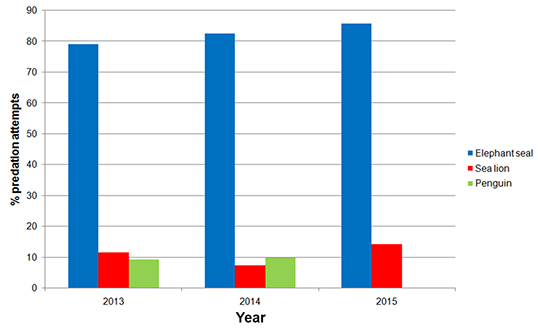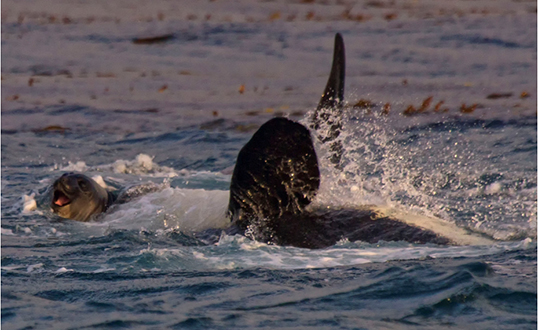Killer whales of Sea Lion Island
Hunting tactics
Distribution of predations

Most predation attempts are observed in November and December, i.e., the months when there is the higher concentration of weaned elephant seal pups. The pups are weaned in early October, and there weaned pups on land until early January, but the number of them increases sharply from mid-October, and decreases sharply from mid- December, see following graph of weanlings on land.

Types of prey

At Sea Lion Island, the main killer whale target are the elephant seals. Although killer whales are routinely observed chasing sea lions, penguins, and even steamer ducks, they concentrate on elephant seals, that is probably the species that guarantees the best return for the effort.
Hunting success

At Sea Lion Island killer whale hunting success is lower than expected, if compared to the reports of the scientific literature, that often shows an almost 100% success of predations on pinnipeds. At Sea Lion Island the average success is about 50% of the attempts, with a large variation among the seasons. This probably over estimate the real success, because successful predations are easier to spot than unsuccessful ones.
Predation of elephant seals

Success of predation on elephant seals is quite high for weaned pups (up to 70%), but it is rather low for the other sex and age classes. At Sea Lion Island killer whales can attack and kill breeding females, subadult males, and even large adult males. In the last case they are usually able to produce great damage but not enough to kill the seal. Most adult males that were attacked by killer whales were able to get back to the beach, and then died there. On the other hand, sometimes killer whales have been observed to actually kill very large subadult males, weighing up to about three tons, and feed on them for many hours (up to twelve).

